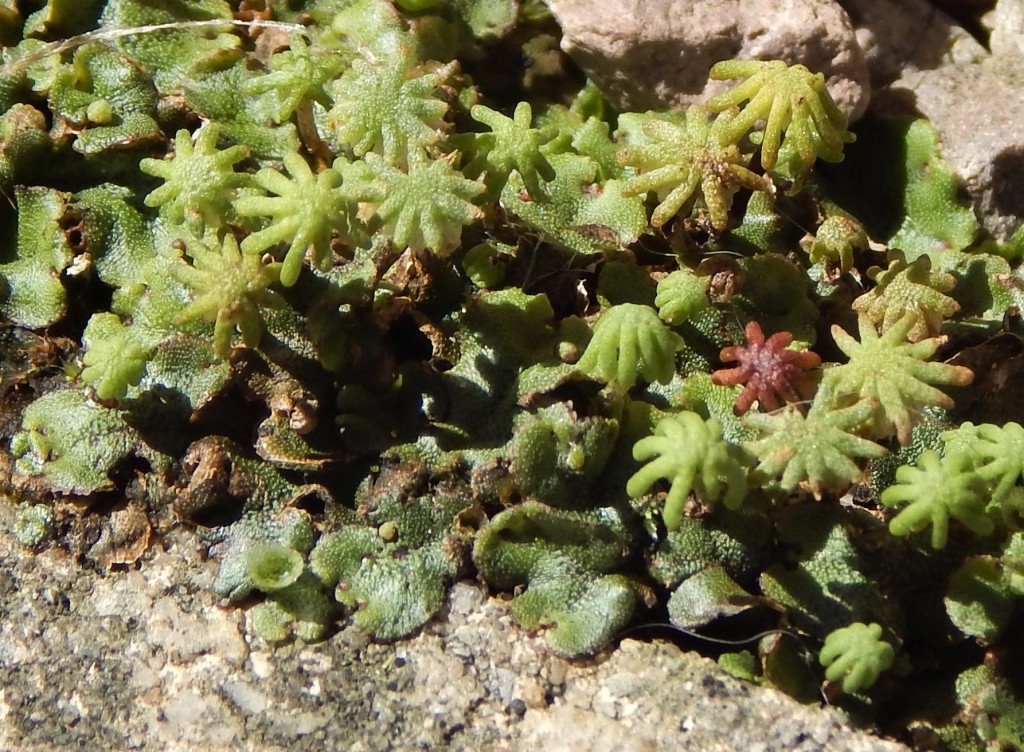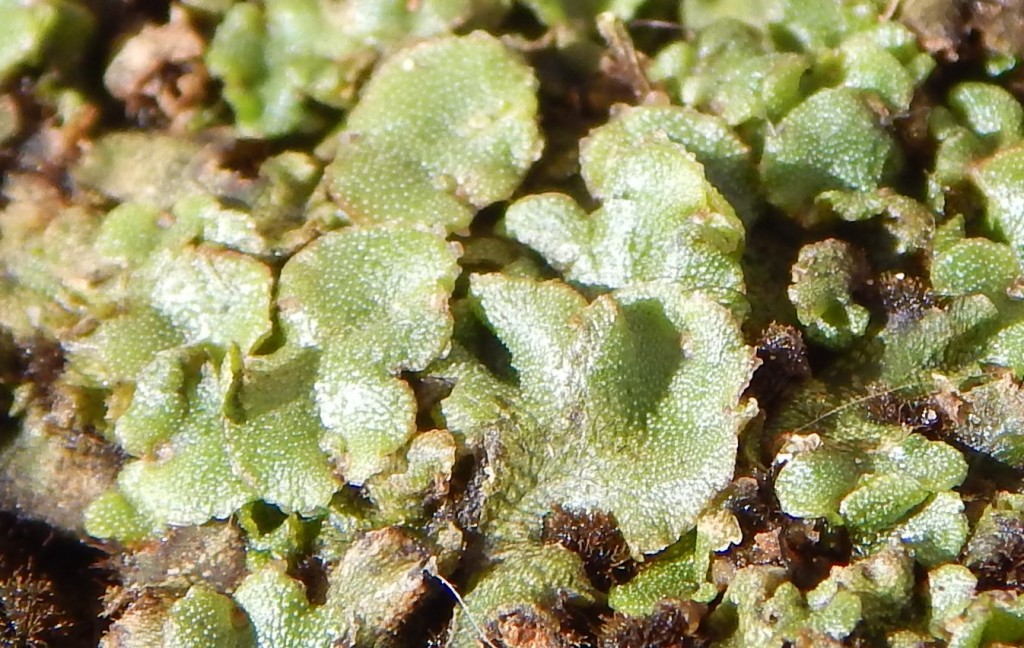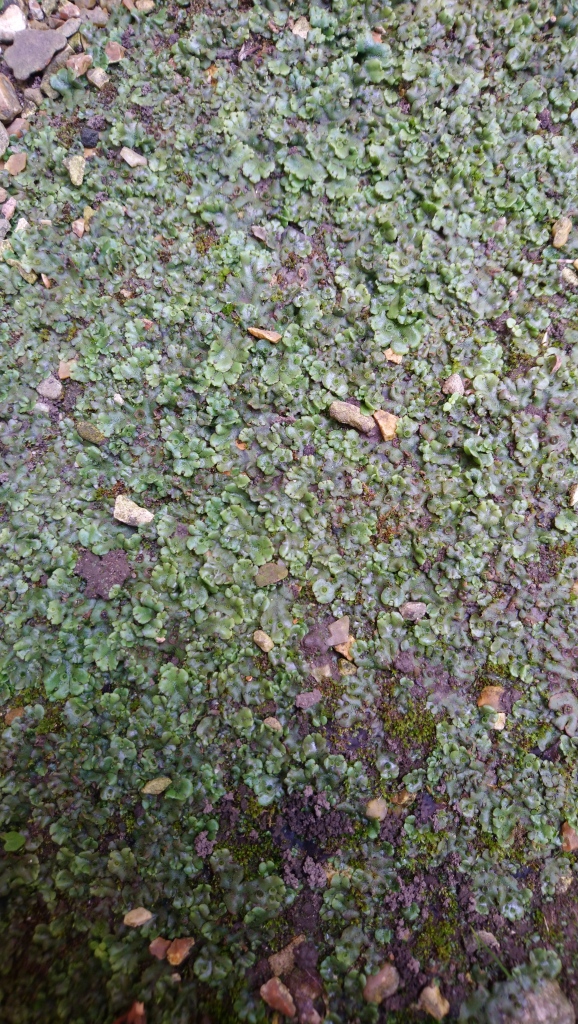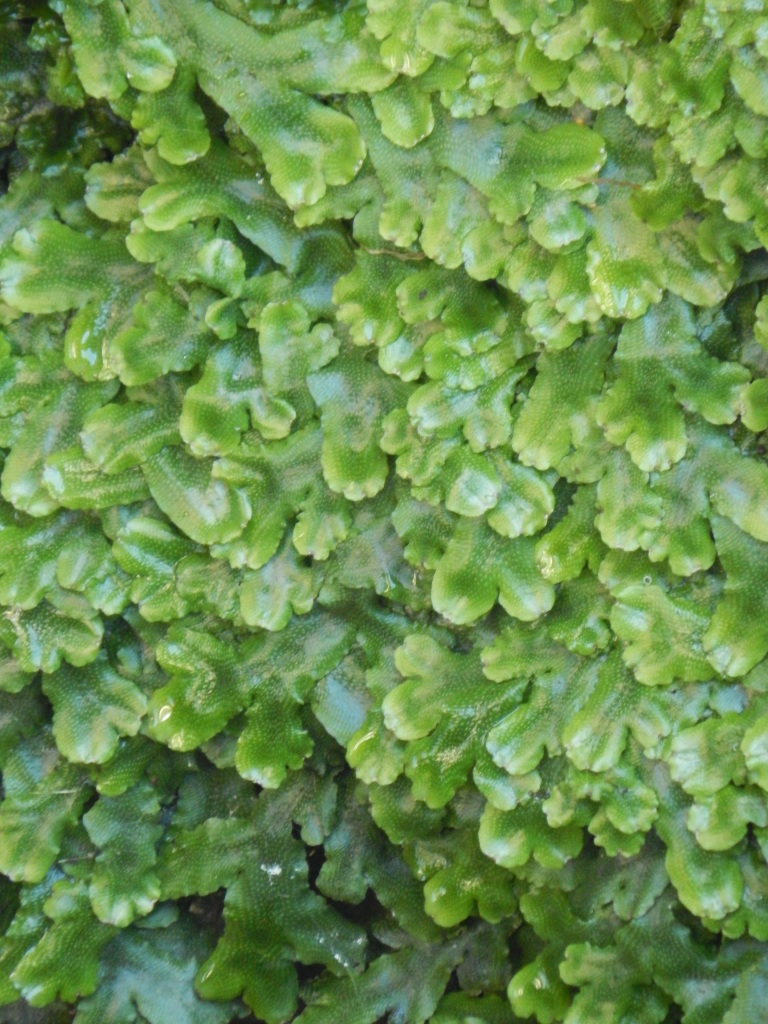
[223] Marchantia polymorpha, Common Liverwort
Introduction
Marchantia polymorpha, Common Liverwort, is a small insignificant plant that I will take as the representative of all Liverworts.
It is also known as Umbrella Liverwort.
Taxonomy
Kingdom – Plants
Clade – Embryophytes (Land Plants)
Division – Marchantiophyta
Class – Marchantiopsida
Order – Marchantiales
Family – Marchantiaceae (Single genus)
Genus – Marchantia
Scientific Name – Marchantia polymorpha
Name
Some species of liverwort were said to look like livers and traditionally some were used to treat the liver medicinally.
Marchantia was named from a botanist called Nicholas Marchant, about whom I can discover nothing.
Description
in [183] Mosses, we learned that Land Plants are almost all Vascular Plants with three minor groups sitting on the fence taxonomically – Moss, Liverworts and Hornworts. Of these, Mosses are very much more common than Liverworts and we can forget about Hornworts. (Traditionally these three were classified together but this is no longer considered to be a valid grouping.)
There are about 9 000 species of Liverwort (and only about a hundred Hornworts.) Liverworts are superficially like flattened mosses and I won’t go into the technical differences. Like moss, they are dominated by the haploid gametophyte phase.
Until recently the family Marchantiaceae contained nine genera. Six of these have been moved to other families and the remaining three have been combined into the genus Marchantia.
Marchantia polymorpha forms a spreading mass of tiny flat leafy structures. Female plants produce a stalk with a star-like (or umbrella like) top. Male plants produce a tiny disc.




Habitat and use
Marchantia polymorpha is found worldwide. It grows in moist and damp places and may be semi-aquatic. It likes man-made environments such as gardens, paths and greenhouses.
Other Notes
I discovered Liverwort in the process of preparation for this blog. A small patch within inches of my home has provided most of the pictures.
Later, I found a much larger patch of it, several metres wide, on a path at Osborne House on the Isle of Wight.

See also
It’s just a coincidence that my only other sighting of Liverworts is another species I found a few hundred metres away on the same day.
Conocephalum salebrosum, Snakewort, from a different family, likes shaded, wet conditions, often on rocks. I found it on a concrete wall beside a waterfall forming part of the river Chelt.






(If you have been learning from my many examples, you could hazard a guess at the name of the family that includes Conocephalum – it’s Conocephalaceae.)
